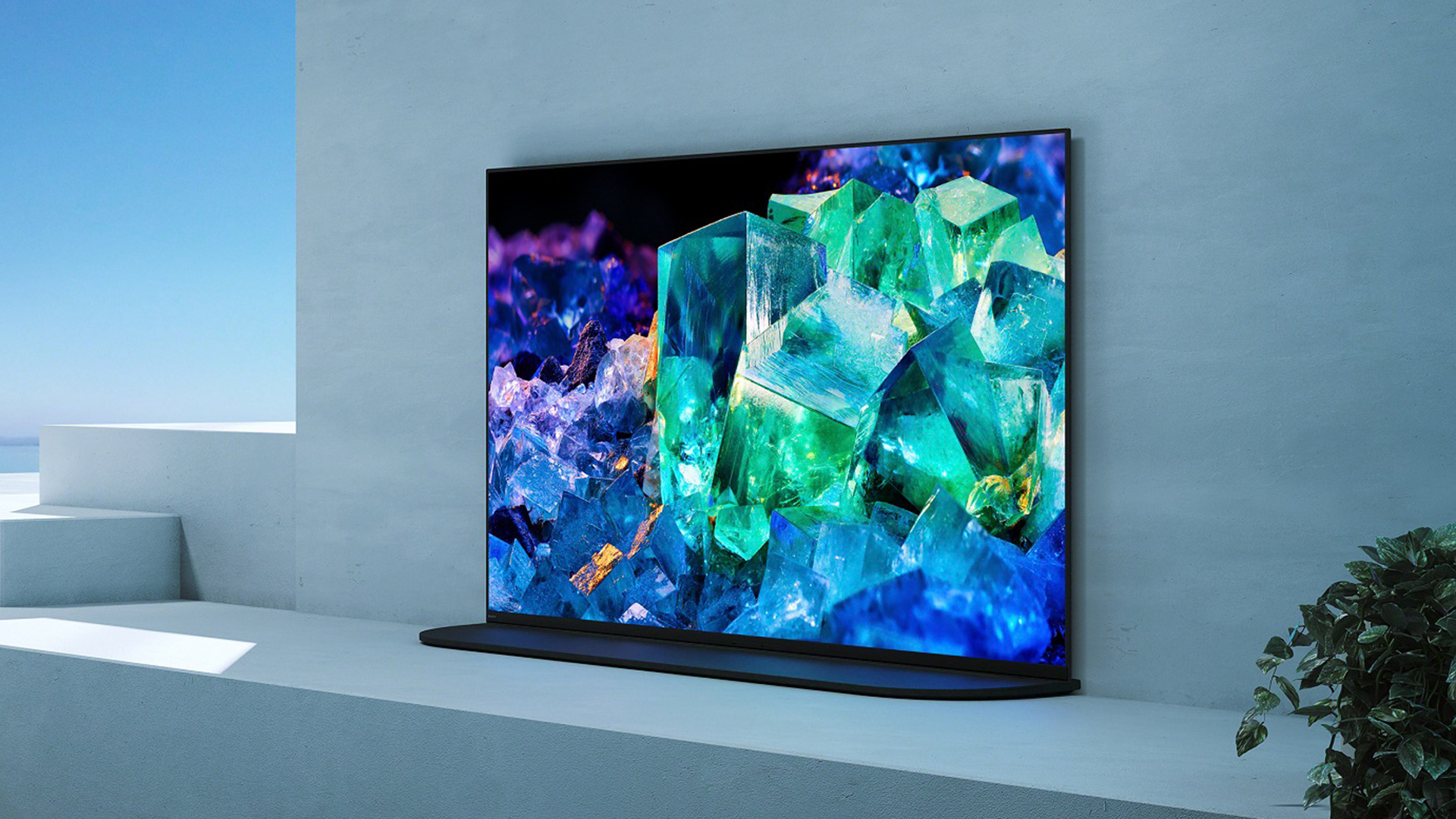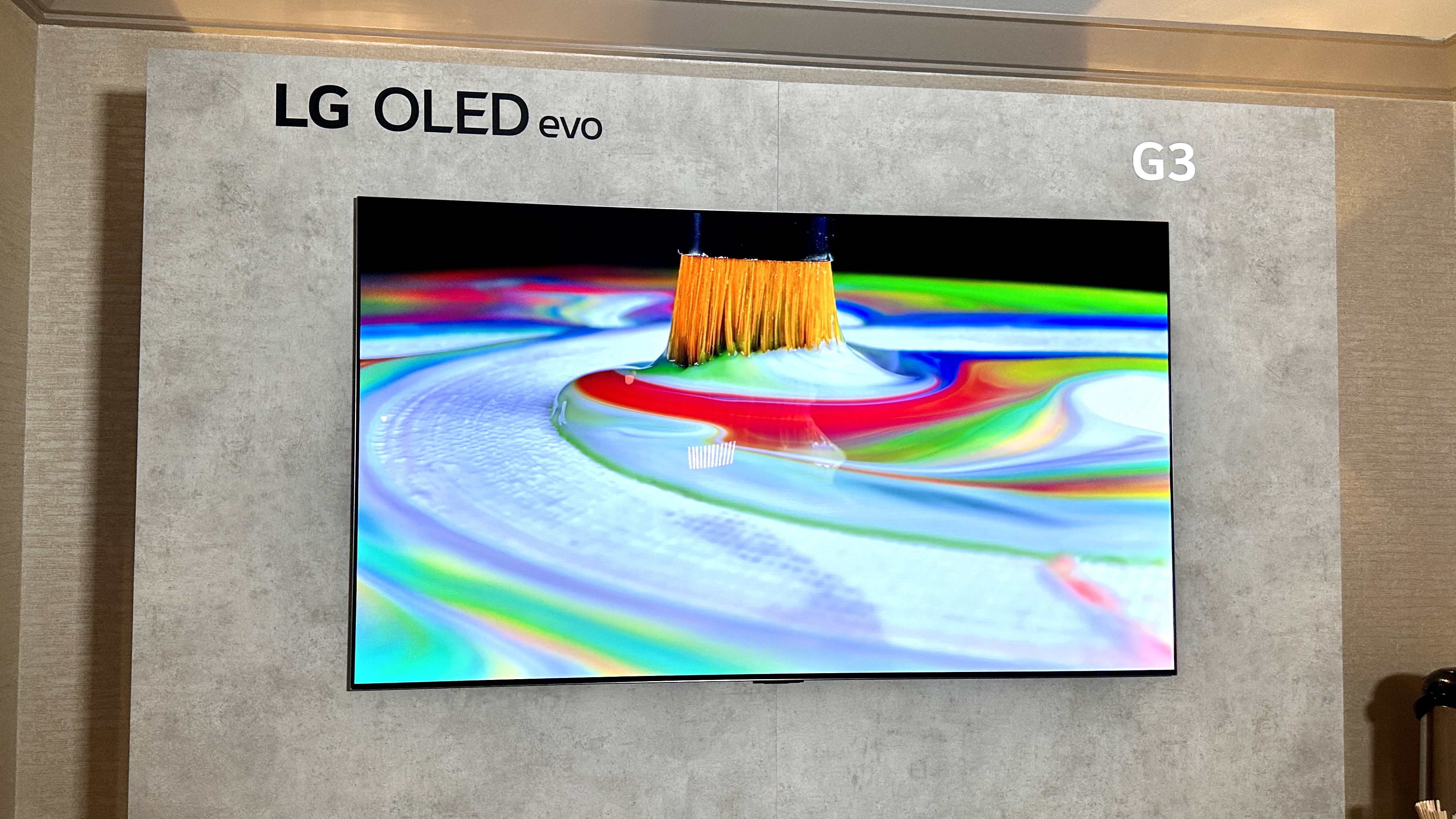LG claims its OLED displays are superior to Samsung — here’s why
LG OLEDs could have a serious advantage over the competition

LG TVs are regularly atop our list of the best TVs we’ve tested and the best OLED TVs in particular. But the competition from Samsung TVs and Sony TVs using Samsung Display panels, like the Sony Bravia XR A95K, is fierce. However, LG has thrown down the gauntlet and said that there’s one aspect where its displays are unparalleled — avoiding OLED image burn-in.
In a press call that Forbes called “hastily arranged,” LG Electronics and LG Display (an LG subsidiary that manufactures display panels for LG TVs) announced that its TVs were far superior to OLED TVs using Samsung Display-supplied OLED panels. This was because while its TVs, like the popular LG C2 OLED TV, don’t show signs of image burn-in in independent testing, the same testing showed noticeable image burn-in on display panels from Samsung Display on both Samsung and Sony OLED TVs. According to Forbes, the image burn-in was noticeable, particularly on the Samsung S95B.
The independent testing in question is done by Rtings and is called the Accelerated Longevity Test. The TVs have been tested since November 2022 and as of February 16, 2023, all 100 TVs have had their two-month results uploaded to their respective reviews. After viewing the photos on Rtings myself, I can confirm that image burn-in is noticeable on both the Samsung S95B OLED and the Sony A95K OLED — particularly on the red and 50% grey uniformity pictures for “Month 02.”

Before you start adding an LG OLED to your online shopping cart and putting your old TV out on the street, there is a caveat to these results. The Rtings testing, while impressive, is potentially flawed according to Rtings itself. Rtings has highlighted in an update to its Accelerated Longevity Test that it didn’t allow the Sony OLED TVs like the A95K to properly run its compensation cycle.
Compensation cycles are one way that OLED TVs prevent burn-in, and each TV runs its own compensation cycles differently. In the case of Sony’s TVs, they only run their compensation cycles after four hours of the TV being turned off, which Rtings test didn’t initially account for. Additionally, Rtings found that in the first two months of testing, Sony TVs only ran automatic pixel refreshes three times per week, compared to the 21 times per week the LG OLEDs ran their automatic pixel refreshes. So this may be causing the burn-in differences.
For its part, Rtings has said it is looking into these differences further so its testing is as accurate as possible.
LG OLED TVs: Why LG panels could be superior

The reason for LG’s burn-in superiority is, according to LG, the underlying OLED technology behind its display panels.
Get instant access to breaking news, the hottest reviews, great deals and helpful tips.
LG Display OLED panels use an OLED technology called WOLED. This technology uses a white subpixel to help create the images you see on your TV screen. This has its drawbacks, such as (arguably) less accurate colors than Samsung Display’s pure RGB OLED panels (panels that only use red, green or blue subpixels). But according to LG, it also helps prevent image burn-in at peak brightness.
For our part, our testing has found the Samsung Display panels to produce excellent bright colors well worth the money. It’s a big part of why the Sony Bravia XR A95K OLED is the best TV we’ve ever tested. The LG OLED TVs, while also excellent, do occasionally fall short when it comes to brightness, though the new LG G3 OLED TV does appear to live up to LG’s promise to be brighter than ever.
So if you’re worried about burn-in, it may be worth checking out the new LG C3 OLED and G3 OLED, for which LG just unveiled pricing and release dates. Otherwise, head over to our TV buying guide and find the TV that’s right for you.

Malcolm has been with Tom's Guide since 2022, and has been covering the latest in streaming shows and movies since 2023. He's not one to shy away from a hot take, including that "John Wick" is one of the four greatest films ever made.
